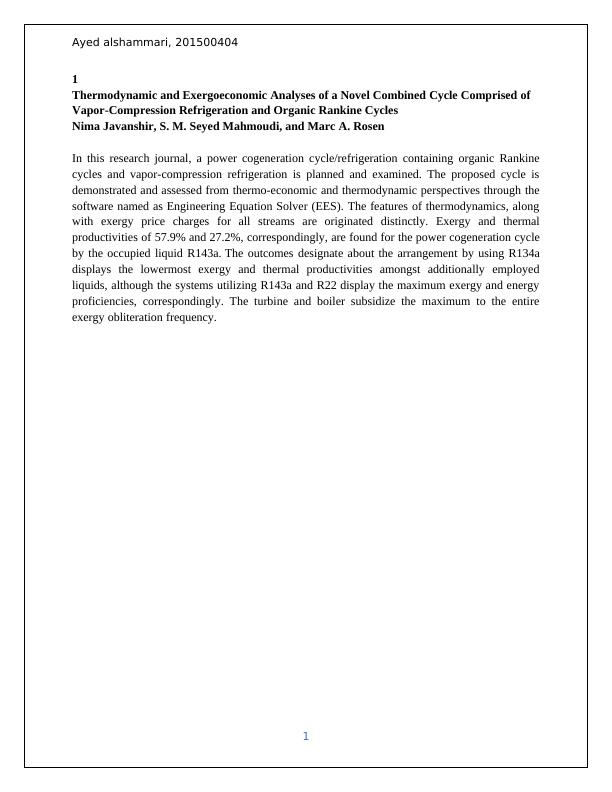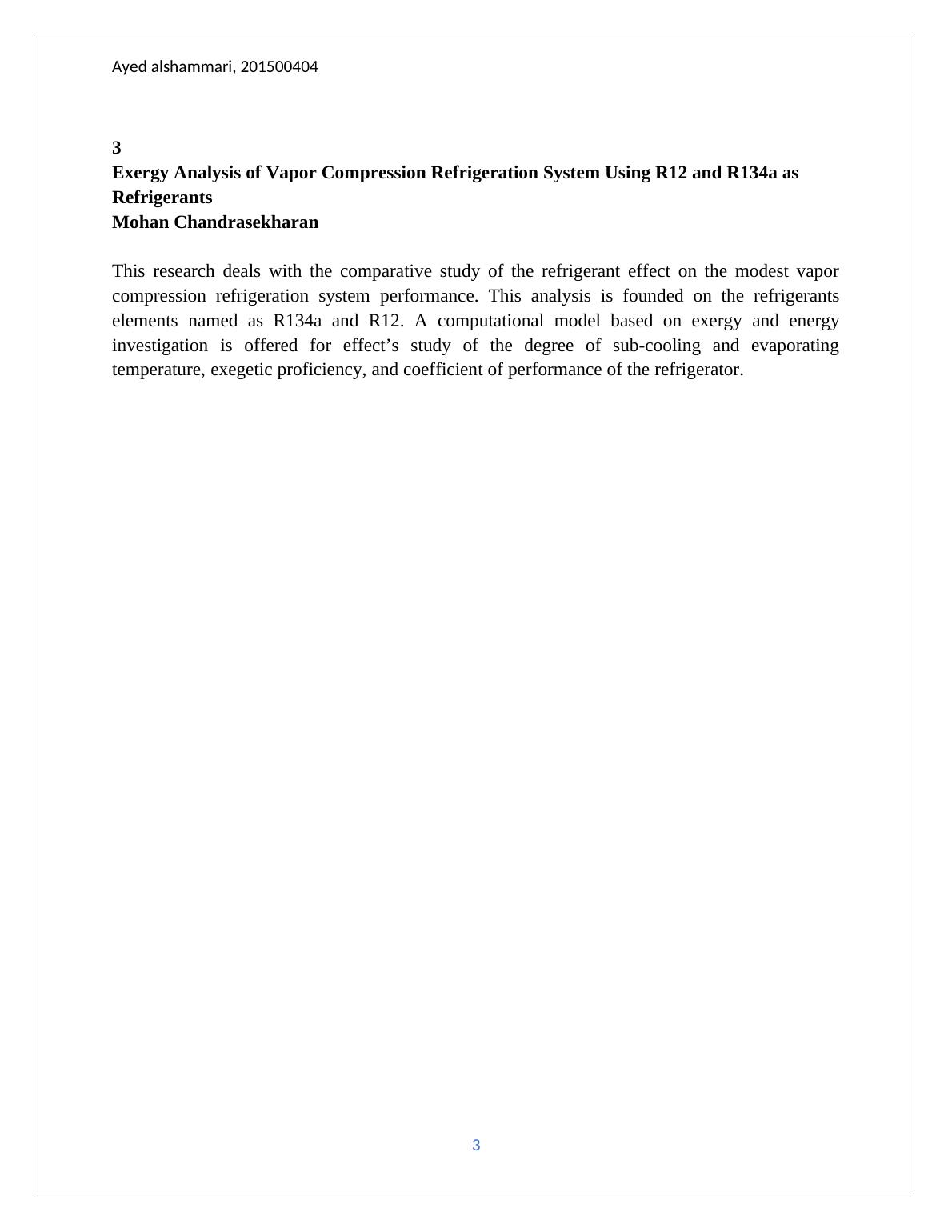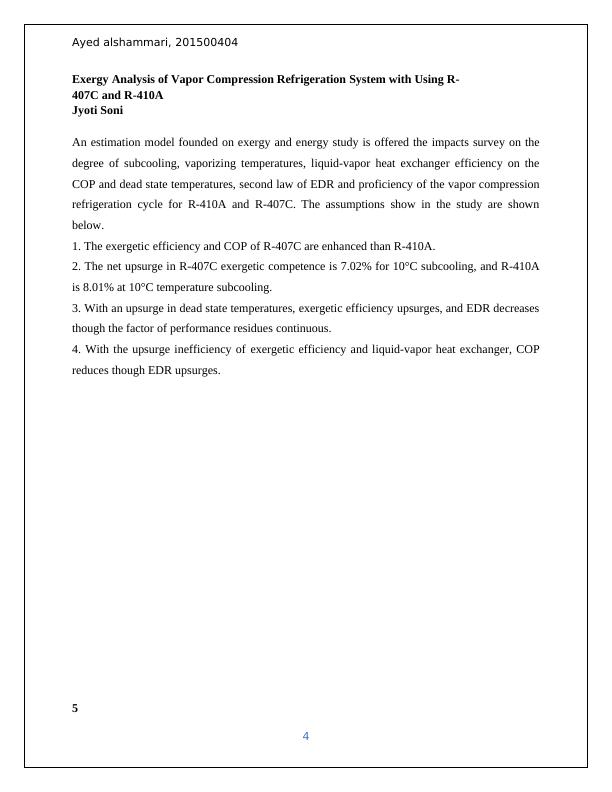201500404 Thermodynamic and Exergoeconomic Analyses
A study on a cooling/power cogeneration cycle consisting of vapor-compression refrigeration and organic Rankine cycles, evaluating the effects of different operating fluids on cycle performance and analyzing the thermodynamic and thermoeconomic aspects of the proposed cycle.
13 Pages1864 Words11 Views
Added on 2022-08-19
201500404 Thermodynamic and Exergoeconomic Analyses
A study on a cooling/power cogeneration cycle consisting of vapor-compression refrigeration and organic Rankine cycles, evaluating the effects of different operating fluids on cycle performance and analyzing the thermodynamic and thermoeconomic aspects of the proposed cycle.
Added on 2022-08-19
ShareRelated Documents
End of preview
Want to access all the pages? Upload your documents or become a member.
Thermodynamic Systems 12
|13
|2664
|277
Vapour-compression Refrigeration - Lab Report
|11
|1996
|2095
Effect of Temperature on Heat Pump Efficiency in Refrigerators, Air Conditioners, and Water Treatment Plants
|8
|3997
|193




